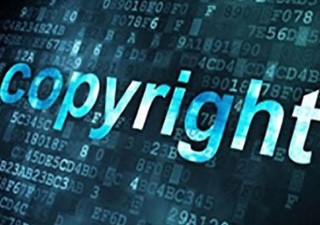An Analogy Between Section 3(c) of the Indian Patents Act and Section 101 of Title 35 USC
30 November 2012

Determining patent-eligible subject matter is a major challenges faced by companies aspiring to create a global patent portfolio, moreso for biotech companies as the patentability criteria of biotech inventions varies significantly in different jurisdictions. While patentability criteria of developed countries are broad and tolerant, those of developing countries are comparably stricter and stringent.
The laws of the United States are liberal in assessing patent eligible subject matters with the understanding that patentable subject matter includes “anything under the sun that is made by man.” This has basis in Diamond v. Chakrabarty, a landmark decision by the United States Supreme Court (USSC) dealing with whether genetically-modified organisms can be patented. This decision gave a much-needed boost to the biotech industry, laying a strong foundation for biotech research. Nonetheless, recent decisions by the USSC have changed this very prevalent understanding.
The court’s March 2012 ruling in Mayo Collaborative Services v. Prometheus Laboratories is considered by experts to be a “game changer.” The court ruled that a process patent Prometheus had obtained for correlations between blood test results and patient health in determining an appropriate dosage of a specific medication was not eligible for a patent because the correlation is a law of nature. The court reasoned “the steps in the claimed processes (aside from the natural laws themselves) involve well-understood, routine, conventional activity previously engaged in by researchers in the field.” Thus, now against the standards which have been followed by the USPTO in determining the patent eligible subject matter for biotech inventions, an important question will be whether or not the subject matter is based on a law of nature.
In an Indian context, this aspect has not been so ambiguous. Indian patent law has not only defined what is a patentable invention under Section 2(1) (j) of the Indian Patents Act, but has also codified in Section 3 what are not patentable inventions. As per Section 3(c) of the Act, “the mere discovery of a scientific principle or the formulation of an abstract theory or discovery of any living thing or non-living substances occurring in nature” is not considered an invention. The clarification for this provision is provided in the Manual of Patent Office Practice and Procedure, Version 01.11, as modified on March 22, 2011. It is made clear that (i) a claim for discovery of a scientific principle is not patentable, but such a principle when used with the process of manufacturing resulting into a substance, or an article, is patentable, and (ii) scientific theory is a statement about the natural world. These theories themselves are not patentable no matter how radical or revolutionary the insight they provide, but if they lead to a practical application in the process of manufacturing of article or substance, they may well be patentable.
Biotech inventions relating to an isolated biological material – be it a protein, nucleic acid or microorganism – have been barred from patentability on account of being merely a natural discovery. Besides, essentially biological processes for production and propagation of plants and animals are barred under Section 3(j).
One may be motivated to draw an analogy between Indian statutes and the recent decision of the USSC that what is based on the law of nature is not patentable.
However, it has remained the practice under Indian patent law that biological material such as recombinant DNA, plasmids and processes of manufacturing thereof are patentable as long as they are produced by substantive human intervention.
Also, a guideline called “An interim procedure for subject matter eligibility analysis of process claims involving laws of nature” has been provided for USPTO examiners; this resonates with the Indian approach. Under this guideline, essential queries have been listed, one of which is “Does the claim include additional elements/steps or a combination of elements/steps that integrate the natural principle into the claimed invention such that the natural principle is practically applied, and are sufficient to ensure that the claim amounts to significantly more than the natural principle itself? (Is it more than a law of nature + the general instruction to simply ‘apply it’?).” Thus, a claim with steps that add something of significance to the natural laws themselves would be eligible because it would confine its reach to particular patent-eligible applications of those laws, such as a typical patent on a new drug (including associated method claims). The same can be observed in patents relating to biotech methods granted post-Prometheus by the USPTO.
The commonness in the Indian and US approaches may be found in the explanation which was provided in the Draft Manual of Indian Patent Practice of 2008: “There is a difference between discovery and invention. A discovery adds to the amount of human knowledge by disclosing something already existent, which has not been seen before, whereas an invention adds to the human knowledge by creating a new product or processes involving a technical advance as compared to the existing knowledge.”
Though the current scenario may seem grim, when drafted carefully, showing human intervention going beyond the natural phenomena, would be and should be patentable.
Krishna & Saurastri
New Excelsior Building, 7th Floor
Wallace Street, A. K. Nayak Marg
Fort, Mumbai 400 001 India
T: +91 22 2200 6322
F: +91 22 2200 6326
E: info@krishnaandsaurastri.com
W: www.krishnaandsaurastri.com





